English
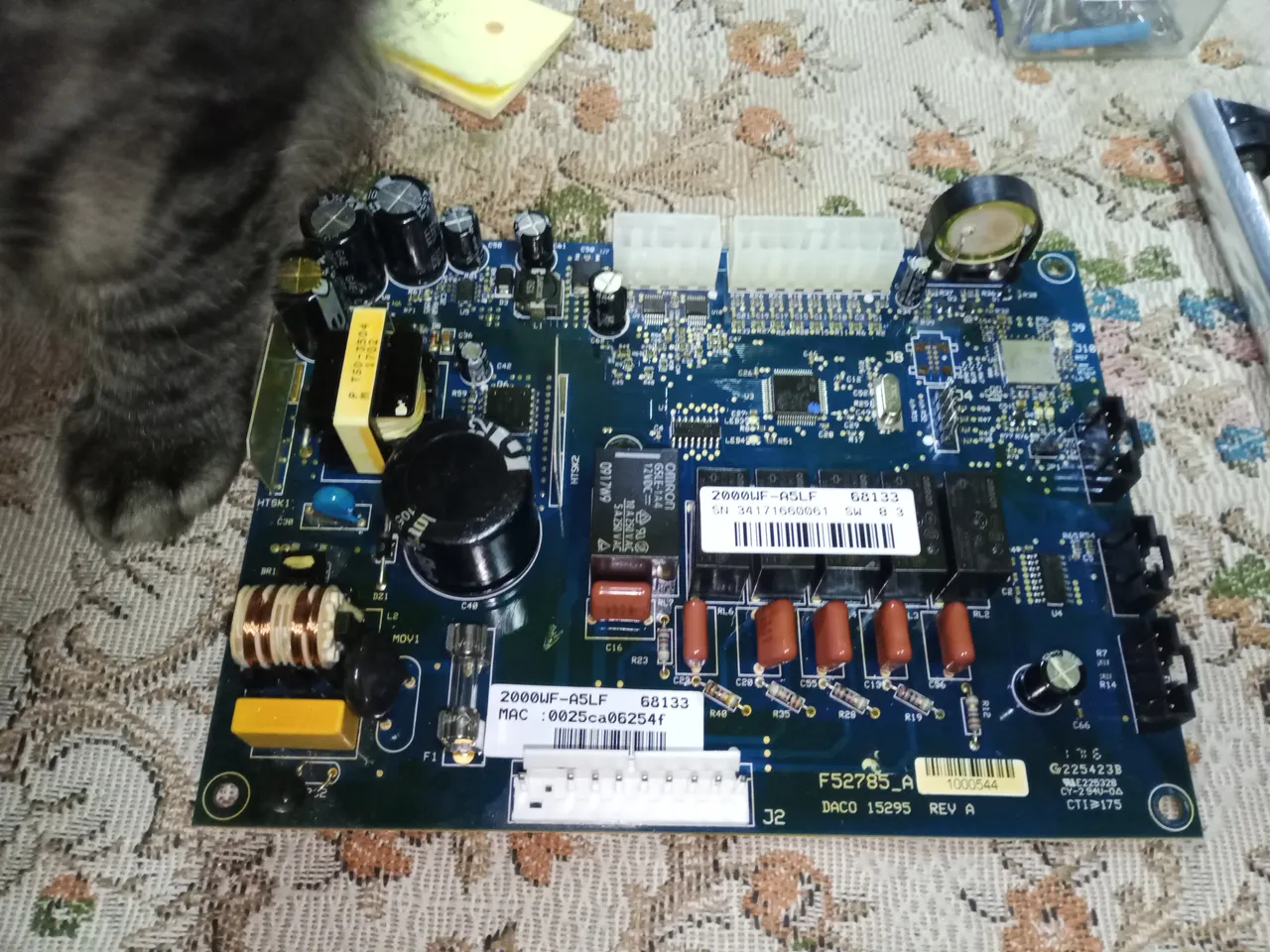
Greetings to the people of the DIY community on Hive. We have before us a new week, to continue working and seeking to improve ourselves a little more every day.
I've been catching up on my shop work a bit more, which will allow me to post more often. This time I will share a simple service that a technical friend brought me, an acquaintance from previous maintenance.
It is a control card for a commercial refrigeration system that was showing operating failures.

I don't have the equipment data, and it was easier to get the control card to the workshop than to bring the complete refrigerator to the workshop.
You can easily see the poor condition of the bottom, but as long as there is no short, there is a chance that it can be repaired.
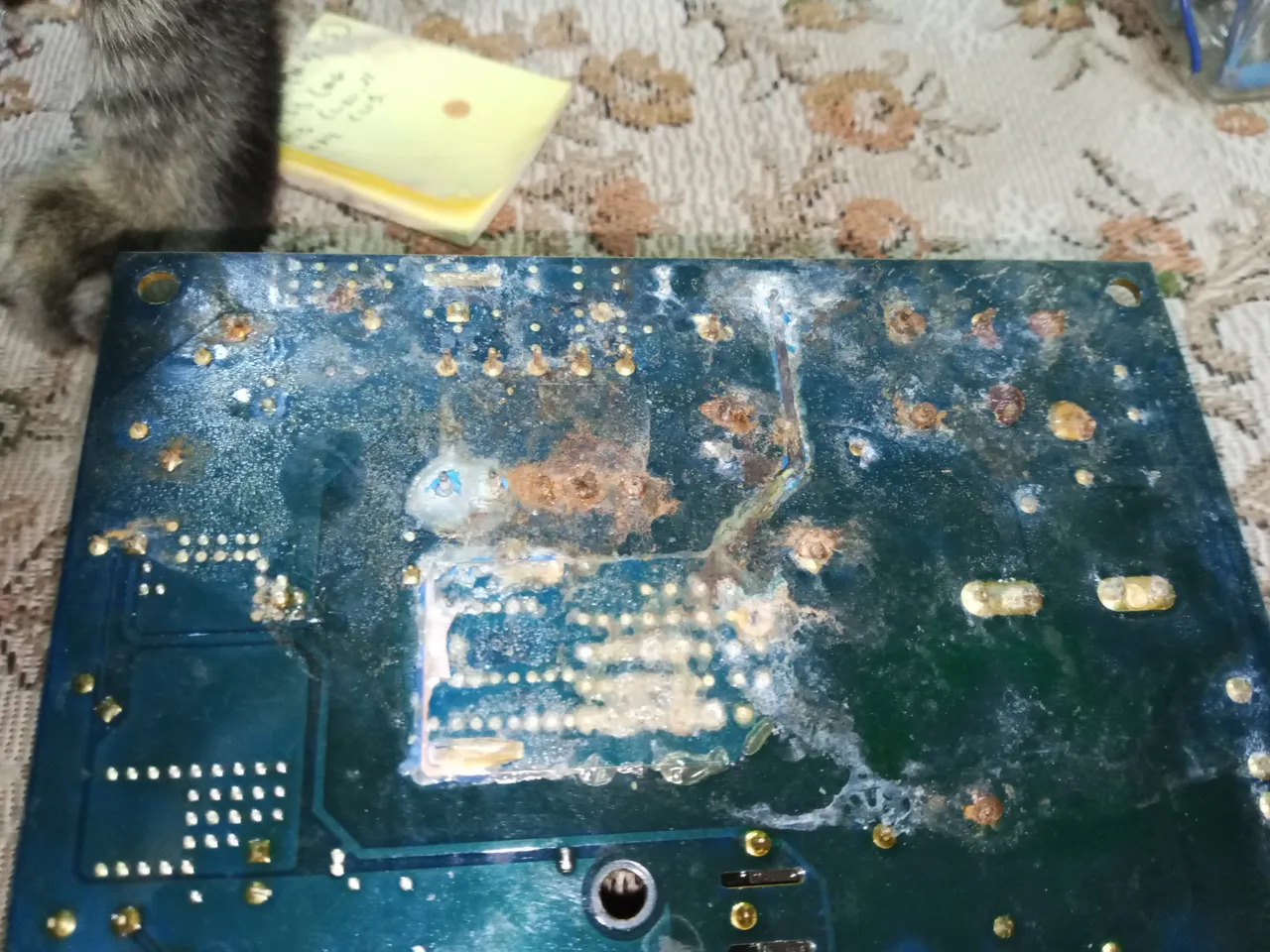
In modern control cards, just like in computers, a check or verification routine is executed. If it detects any failure, it stops the start of the computer, in some cases it even blocks the start or boot of the computer.
Which in many cases prevents much greater damage to the control cards. And there will be more chances of being able to repair it. The fuse was good, which gave me some hope.
The layer of varnish that protected the tracks and welds on the underside had come off, and in the box that housed the card, the protective seal between the covers had deteriorated, so the interior had filled with water.
I had to remove the remains of the protective cover, (the varnish that had partially come off) it took me some time to brush with solvent until the circuit board was ready. Then all the oxidized solder had to be removed, cleaned again with solvent, and finally I was able to make new solders.

One track in particular, which took extra work and care, was broken by corrosion in three sections. When doing these jobs, you have to be very careful not to connect the track incorrectly, you have to avoid soldering in a short circuit or when you connect the card, it can happen that it burns.
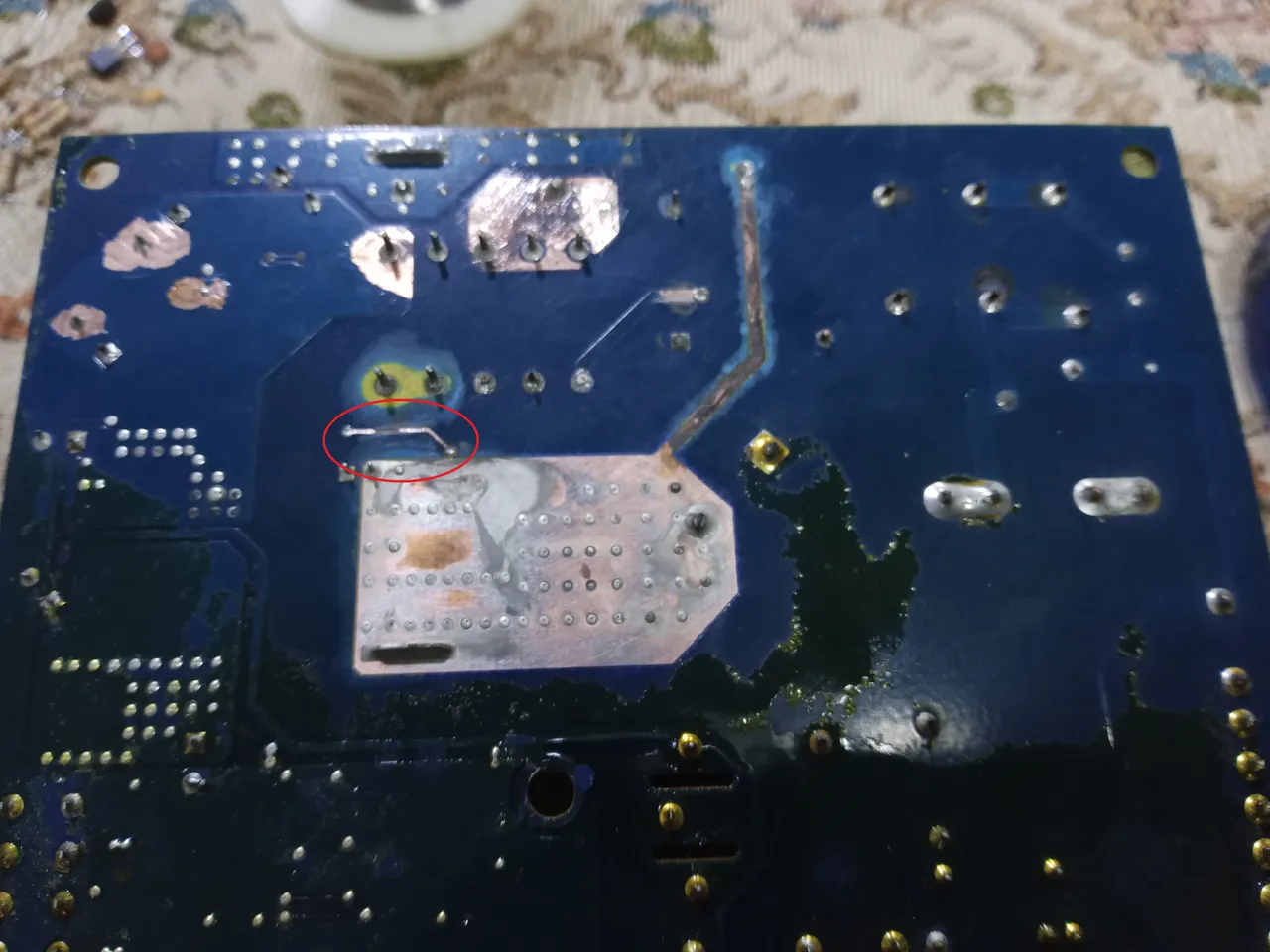
I had to use a camera and zoom in to see where the track I was repairing actually ended. It was a very thin track, after several failed attempts I was able to redo it, but I admit that I was not very satisfied with the appearance in the end.

If you solder a lot on a track, on a circuit board, you run the risk of the copper track coming off the board and that is something that would make our job much more difficult. And with such a thin track, I'm going to have to leave it alone, or I'll end up damaging it beyond repair.
Well, it was a slow service, but quite simple, to finish the job, I checked the capacitors with a Capacheck, which is a tester that is used to test the capacitors without unsoldering them from the board.
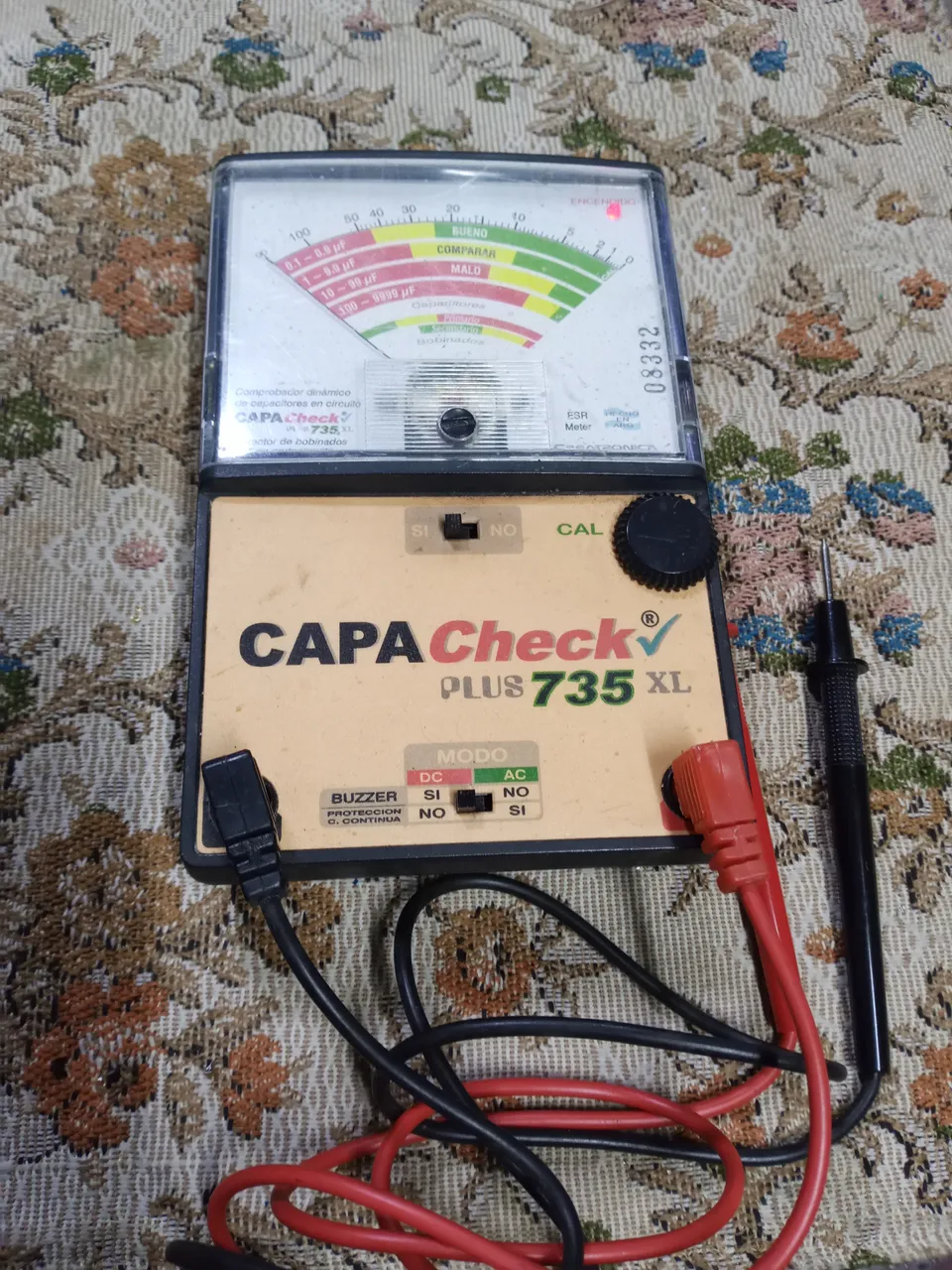
I would have liked to have the plan to do a better review, but I have to work with what I have at hand. I had already commented in another publication that, many times, the plans of some equipment are not online, many times they are only available for the technical service of the brand, and they do not share it. So you have to work, based on experience and knowledge, as if it were a generic television or washing machine card.
I just have to try the card in the fridge and if everything is fine, cover the tracks with a layer of hot silicone, to prevent moisture from affecting it.
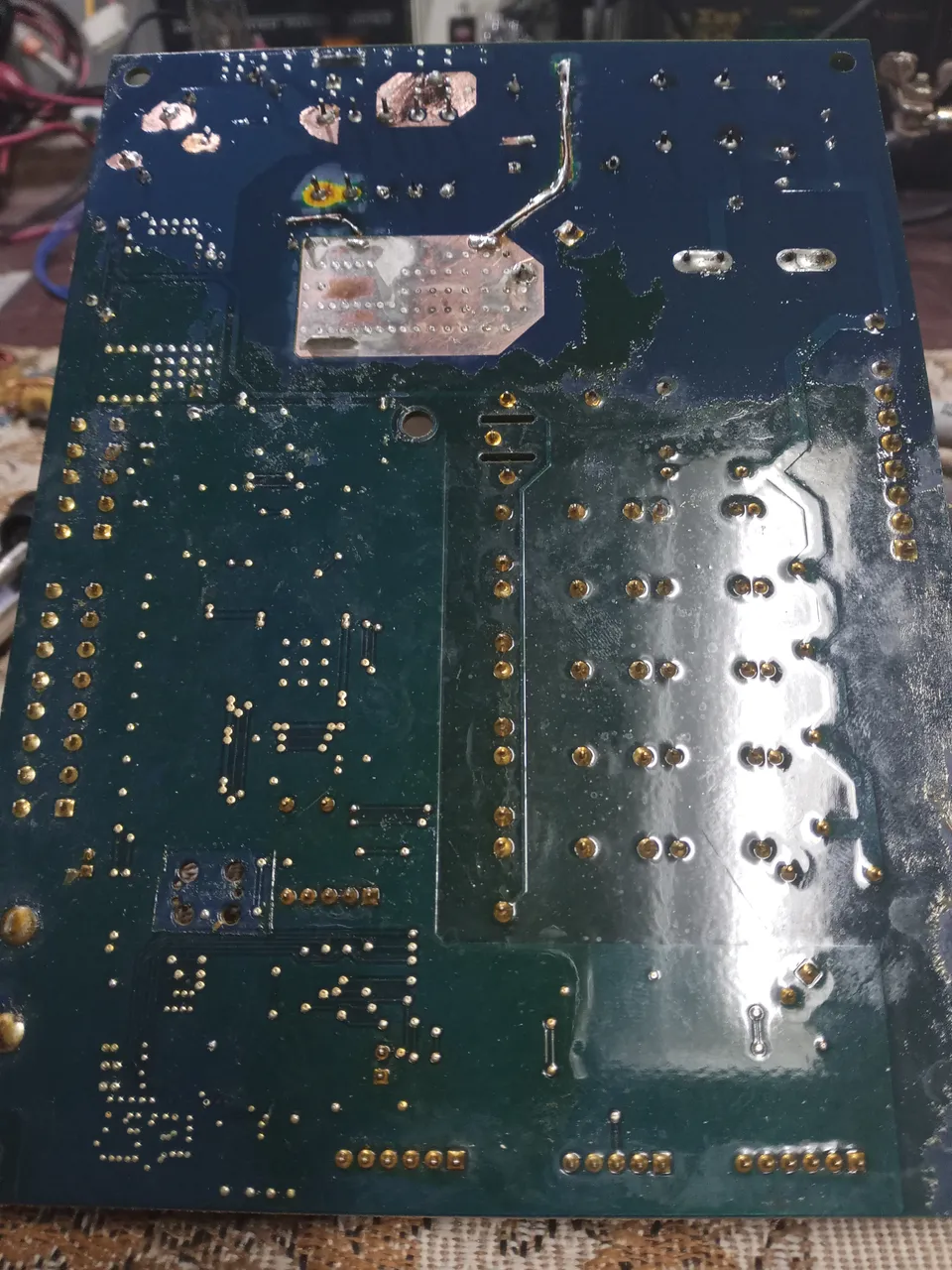

Thank you very much for stopping by and reading.
Have a great week.
Peace.
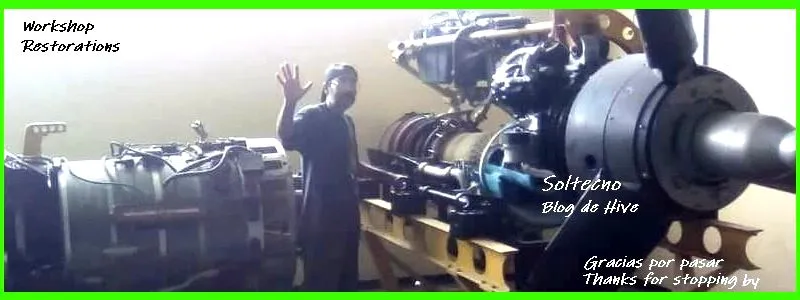
Images unless otherwise noted are of my work in the workshop.
I have used Google Translate for the English language.
I have tried to use the Deepl translator for English, it has been highly recommended to me, but for some reason it does not translate for me. Later, maybe I will solve the problem and be able to use it.
Español

Saludos para las personas de la comunidad DIY en Hive. Tenemos ante nosotros una nueva semana, para seguir trabajando y buscando superarnos un poco más cada día.
He estado poniéndome un poco más al día en el trabajo de taller, lo que me va a permitir publicar más seguido. En esta oportunidad les compartiré un servicio sencillo que me trajo un amigo técnico, un conocido de mantenimientos anteriores.
Es una tarjeta de control de un sistema de refrigeración comercial que le estaba presentando fallas de operación.

No tengo los datos del equipo, y era más sencillo alcanzarme al taller la tarjeta de control, que el traerme la nevera completa al taller.
Se puede ver sin dificultad el mal estado en que se encuentra la parte inferior, pero mientras no haya un corto, hay oportunidad que pueda ser reparado.

En las tarjetas de control modernas, al igual que en las computadoras, se ejecuta una rutina de comprobación o verificación. Si detecta algún fallo, se detiene el inicio del equipo, en algunos casos incluso se bloquea el inicio o arranque del equipo.
Lo que en muchos casos evita un daño mucho mayor en las tarjetas de control. Y habrá más posibilidades de poder repararla. El fusible estaba en buen estado, lo que me daba algo de esperanzas.
La capa de barniz que protegía las pistas y soldaduras de la cara inferior se había desprendido, y en la caja que se alojaba la tarjeta, el sello de protección entre las tapas se había deteriorado, así el interior se había llenado de agua.
Tuve que retirar los restos de la cubierta de protección, (el barniz que parcialmente se había desprendido) me llevo algo de tiempo cepillar con solvente hasta dejar lista la placa de circuitos. Luego hubo que retirar toda la soldadura oxidada, para volver a limpiar con solvente y finalmente pude hacer soldaduras nuevas.

Una pista en especial, llevo trabajo y cuidado adicional, estaba interrumpida por la corrosión en tres secciones. Cuando se hacen estos trabajos, hay que tener mucho cuidado de no conectar la pista de forma incorrecta, hay que evitar soldar en cortocircuito o cuando conecten la tarjeta, puede pasar que se quemara.

Tuve que usar una cámara y hacer Zoom, para ver donde realmente terminaba la pista que estaba reparando. Era una pista muy delgada, después de varios intentos fallidos es que pude rehacerla, pero reconozco que no quede muy satisfecho con el aspecto al final.

Si se suelda mucho sobre una pista, en una placa de circuitos, se corre el riesgo de que se desprenda la pista de cobre de la placa y eso es algo que nos haría mucho más difícil el trabajo. Y siendo una pista tan delgada, voy a tener que dejarla en paz o terminaré dañándola sin remedio.
Bueno, fue un servicio lento, pero bastante sencillo, para terminar el trabajo, revisé los condensadores con un Capacheck, que es un tester que sirve para probar los capacitores sin desoldarlos de la placa.

Me habría gustado tener el plano para hacer una mejor revisión, pero tengo que trabajar con lo que tengo a mano. Ya había comentado en otra publicación que, muchas veces, los planos de algún equipo, no están en línea, muchas veces solo están a disposición para el servicio técnico de la marca y no lo comparten. Así que se tiene que trabajar, con base en la experiencia y el conocimiento, como si fuese una tarjeta genérica de televisor o lavadora.
Solo me queda que prueben la tarjeta en la nevera y si todo está bien, cubrir las pistas con una capa de silicona caliente, para evitar que la humedad pueda afectarla.


Muchas gracias por pasar y leerme.
Que tengan una semana excelente.
Paz.

Las imágenes a menos que se indique lo contrario son de mi trabajo en el taller.
He usado el traductor de Google para el idioma inglés.
He tratado de usar el traductor Deepl para el inglés, me lo han recomendado mucho, pero por algún motivo no me hace la traducción. Más adelante tal vez resuelva el problema y pueda emplearlo.